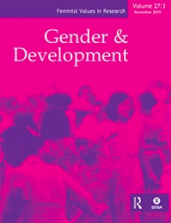#MeToo with Chinese characteristics – analysis through a lens of Chinese feminism

Overview
As a victim-survivor and feminist activist who participated in the #MeToomovement in China, I always have confusion and questions generated from my experiences and observations. The limited literature on Chinese social movements rarely utilises China situated frameworks, which reduces the understanding. This article focuses on ‘how #MeToo movement(s) manifest and evolve in China’ and aims to find out its ‘Chinese characteristics’. Through an analysis of two archives and my autoethnography using He-Yin Zhen’s feminist analytical concepts ‘nannü’(man/woman) and ‘shengji’ (livelihood), Confucian moral outlook, and ‘Chinese characteristics’, I find that the movement displays ‘Chinese characteristics’ in multiple aspects. There is not one monolithic #MeToo movement in China but many with different agendas, although some of which are prioritised more than others. These findings stress the importance of privileging the historic-cultural context and personal perspectives in studying social movements. This article illustrates that situated feminist research is needed to reconstruct feminist studies in the global South, and that feminist movements need to consider the historical and cultural context, and challenge dominant romanticising and elitist discourses, in order to develop sustainably.
Keywords
Additional details
Author(s)
Publisher(s)
Editor(s)
DOI
https://doi.org/10.1080/13552074.2023.2167634How to cite this resource
Citation styles vary so we recommend you check what is appropriate for your context. You may choose to cite Oxfam resources as follows:
Author(s)/Editor(s). (Year of publication). Title and sub-title. Place of publication: name of publisher. DOI (where available). URL
Our FAQs page has some examples of this approach.

